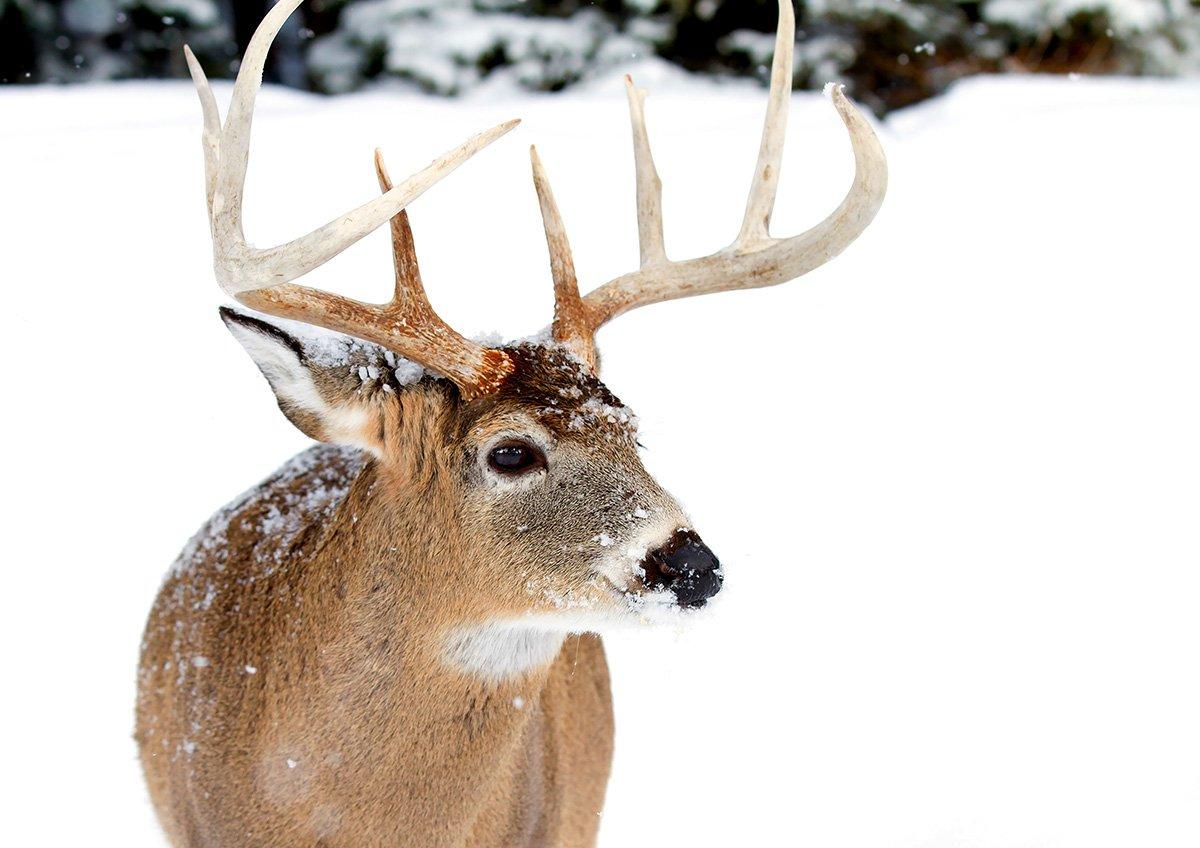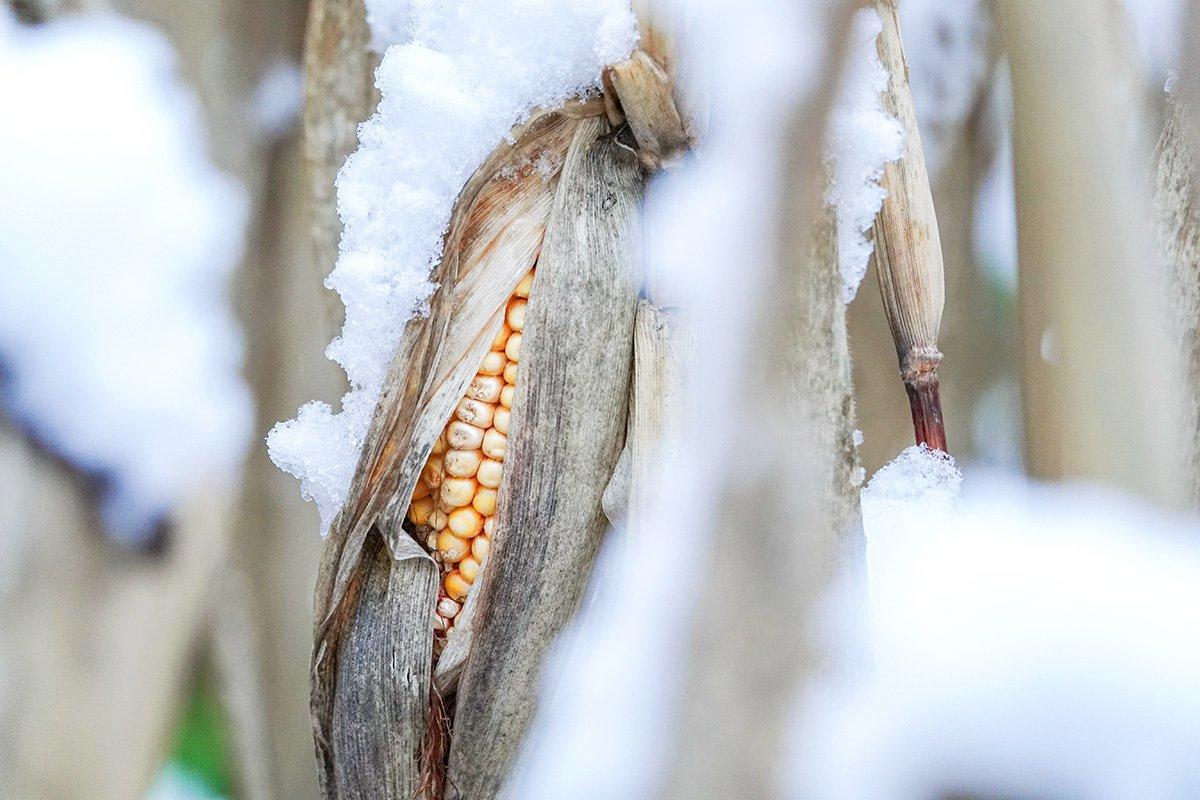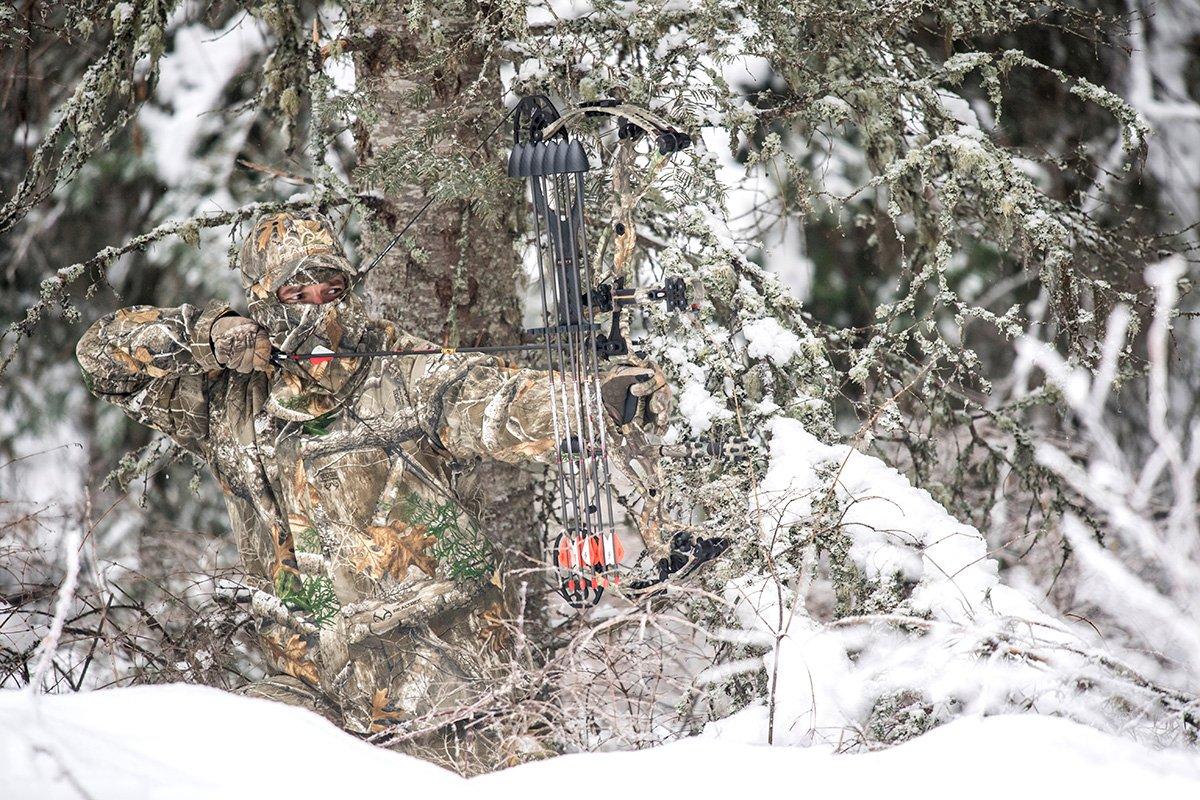It's winter, and the end of season is near. But no worries — you still have plenty of time to punch a buck tag
It's mid-December, and a buck tag is still burning a hole in your pocket. Most of your buddies have killed their deer, and you're starting to worry. Maybe even panic.
I've hunted hard like I always do every year. What am I doing wrong? Did I miss the rut? Will I get my buck?
Take a deep breath and look at your predicament as an opportunity. You still get to roam the deer woods for a few more days, and the buck hunting is a lot better than you might think. Heed these tips to score at the buzzer.
Hunt the Early Post-Rut
I hunt in several states in early December, from Kansas to Oklahoma to Virginia. All over I am witnessing good to great deer movement, and more rutting activity than ever before. I see such good action, in fact, that the early post-rut has become one of my favorite and most productive times to hunt.
Bucks are thin and tired but still running on a last jolt of testosterone. Sometimes an 8-pointer rakes fresh rubs and a few last scrapes, so look for them. Big deer sometimes cruise back through creek bottoms and draws where they scraped and rubbed and hooked up with does three weeks ago.
Go back and hunt a stand that you hung in a sign-blazed funnel in late October or November, and you might catch a buck cruising there now.
In the post-rut, you need to be mobile and find a hotspot of deer activity, which is exactly what I did in northeastern Oklahoma last December. There were a few fresh rubs in the area, and a ton of old scrapes. I decided to camp out in the area for the last four days of my hunt.
It didn't take that long. On the second afternoon, a sweet 10-pointer nudged a doe across the power line I was watching, and I dropped him with my lever gun in .35 Rem.
(Don't Miss: 5 Best Places for Snow Tracking Bucks)
Find the Food
Your main strategy from, say, Dec. 10 through the end of the season, should center around the limited food sources that remain for deer. Both does and bucks are run down from the primary rut, and they have to eat. The colder (and snowier) it is in December, the harder deer move to and from the feed, and the more visible they will be in daylight.
You'll see the most animals if you have access to corn, soybeans, or alfalfa. A patch of standing corn is especially good, as it provides both eats and cover for deer.
In a harvested bean field, scout edges and corners where a few strips of standing beans were missed by combines. Those scraps are a magnet for deer. One chilly December evening, I shot one of my biggest Iowa bucks, a 150-inch 10-point, by finding a few leftover beans and taking a ground setup nearby.
The less gun pressure in and around a field thus far during the season, the more bucks you will see active in daylight. Pray for snow and temps from the teens to mid-30s. A hungry buck might pop out into the crops morning or afternoon, or even briefly in the middle of the day if he's after a last hot doe. Bundle up and be out there till the end.
If you hunt big woods, public or private, miles from the nearest crops, you won't see nearly as many deer, and none some days. To have a chance of punching your tag you must find and watch what little food/cover mix is left for a buck: greenery on the edge of a power line or in a cutover; a few remaining nuts in a second-growth oak flat; browse near a cedar swamp … you get the picture.
Hunt Midweek
In an interesting study, researchers at Auburn University tracked a herd of GPS-collared deer on a moderately hunted WMA in the South. Once hunters began arriving on Friday, daytime deer movement dropped markedly. The data showed that rack bucks hardly moved at all as people tromped around the woods on Saturday and Sunday.
Deer continued to lie low on Monday. By Wednesday, the woods had settled down some, and does felt comfortable moving again. Bucks began to stick their necks back out.
If you can get off work, Wednesday and Thursday are the days to hunt public ground.
Hunt the Public Rut
Here's another ray of hope for you public-land hunters. Biologists at Mississippi State's deer research program say that in December, you can have some great, late rutting action on a typical WMA or national forest where does far outnumber bucks.
On rough land where the buck-to-doe ratio is out of balance, there aren't enough bucks to breed all the does during the peak November estrous period. Some 26 to 28 days later, the missed does come back into heat. But there aren't nearly as many hotties now (a good number were bred in November), so the sweet-smelling ones draw bucks and concentrate them. If you're in the right place at the right time when a hot doe comes by, there's a good chance you'll see a rack.
Even better, the Mississippi State data show that bucks 2 1/2 years and older do most of the late-rut breeding, so you might shoot a big one.
(Don't Miss: The Best Shot Placement on Deer)
Go to Ground
There are two reasons I love hunting from the ground in winter. On a cold, windy day it's a heck of a lot warmer down there than it is hanging 20 feet off the side of a bald tree. And in a lock-on or ladder in a bare tree in a forest of leafless trees, you stick out like a sore thumb. You have a lot more cover for concealment down on the dirt.
One December morning, I located a small herd of deer staging in a CRP field, nibbling green forbs that sprouted up after a warm winter rain. The pasture was dotted with cedars 2 to 4 feet high. When the animals went to bed, I snuck close, cut a few bushes, and dragged them to a spot where the visibility and wind were good. I arranged that hide in all of five minutes.
That afternoon I snuck back in and sat still. Eight deer strolled within muzzleloader range and never lifted a nose or blinked an eye. I smoked the biggest one, a fat 8-pointer.
It worked because I blended my tiny cedar blind into the winter landscape. If you can't do that, forget it. If you erect a big, tall blind out in a field or in open woods and try to hunt it the same day, every deer that approaches from 200 yards will slam on the brakes, stare, and wonder: What's that blob? It wasn't there yesterday.
Does will head-bob, blow, and run for the hills. Same goes if you pop up a commercial blind out in the open — I guarantee you'll spook every deer that is already spooky this late in the season.
Moving in for a quick-strike ambush in December is a good tactic, but you've got to be smart. All you need is a small, low-profile brush blind. Stack just enough cedar trees, logs, or brush and grass to break your outline and cover your moves as you sit against a tree or fence post.
Create a Pressure Plan
Virtually every farm or wood in all of whitetail country, public or private, has had a little or a lot of hunting pressure come December. Don't fret about it, but rather factor pressure into your strategy and use it to your advantage.
Numerous studies of hunter behavior have shown that the vast majority of people hunt well within a mile of a road, field, or parking spot. In late season, forget those spots. And you don't necessarily have to hike deeper into the woods away from easy access points.
(Don't Miss: How to Hunt Big Buck Bedding Areas)
Numerous studies of whitetail behavior have revealed that bucks do not flee pressure by leaving their core areas and heading miles for deep cover. Rather, they continue to live in the same home ranges, and seek out hidden, thick spots where most people never go.
Think not necessarily remote, but off the beaten path: a hard-to-access beaver swamp near a gravel road; a 2-acre thicket at the head of a rocky gully; an overgrown hog lot behind an old barn … a little sanctuary like that is where you can find an 8- or 10-pointer hiding and trying to ride out the season.
(Don't Miss: Story of a Mega Ohio 9-Pointer)










